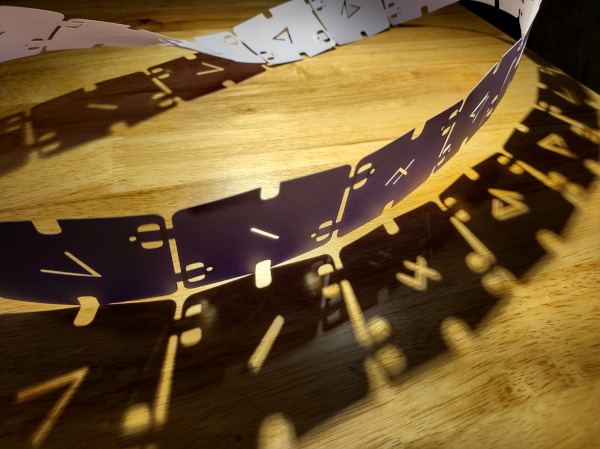This piece demonstrates the difference between Listing bands with odd and even numbers of twists, as well as band components with two types of asymmetry. One photo on its own doesn’t really give enough visual information to understand the shape. Multiple photos just end up being confusing because different angles look like completely different pieces of art. Videos make this much easier.


The numbers punched through the bands show that a cycle of numbers will repeat as long as the cycle is an odd number. (Even numbers only work with band components that are completely symmetrical.) In a design like this, where it is easy to view numbers from many angles and orientations, most Hindu-Arabic numerals aren’t ideal because they will often look backwards. Because of the twist in the loop, each number would need to appear forward and backward at the same time anyway.
Cistercian numbers were an inspiration for the symbols I created for this piece. Someone never having seen these symbols could figure out what value each one has, because each numeral’s value is just the number of line segments.


The two types of symmetry used for the band scales are shown here. In order for the ends to meet at any point in the band, a single twist is necessary for one, and a double twist is necessary for the other.
Can you tell which is which? You can always cheat by looking at the pictures and video.
One added bonus of bands this size is that the structures are self-supporting.